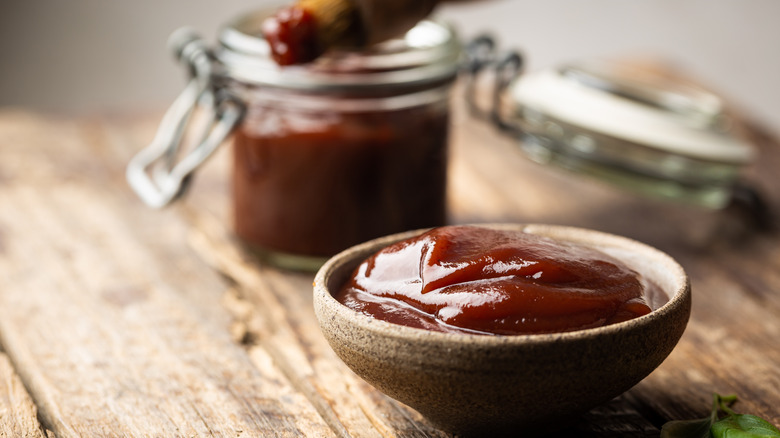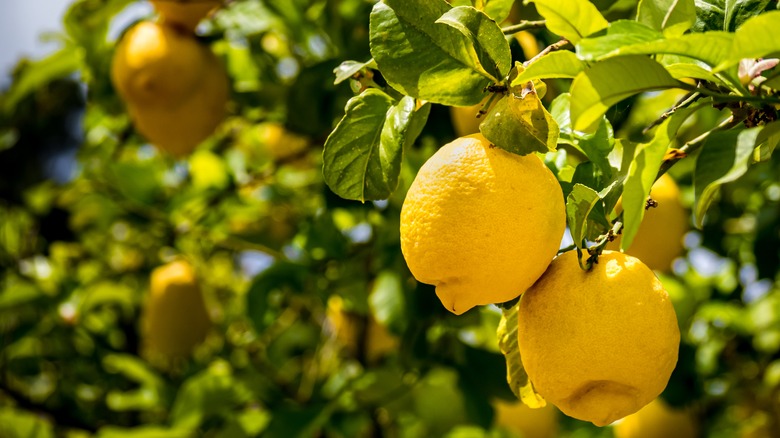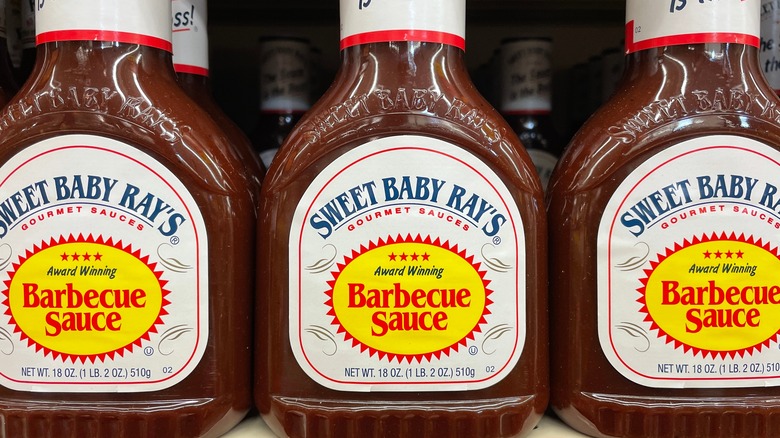How America Came To Make (And Love) Sweet Barbecue Sauce
Barbecue is a beloved style of cuisine with a seemingly simple base set of cooking instructions. First, you take a hunk of meat. Then, you season it. Finally, you toss the hunk of meat over or into a heating source of some kind and wait until your succulent cut has been cooked to your liking.
However, the amount of variation that can be found within that relatively basic set of instructions is truly incredible. In Jordan, for example, you can enjoy goat cooked in an underground sand oven. In Fiji, freshly caught fish are wrapped in banana leaves and steamed over heated volcanic rocks. Filipino cuisine features skewers of meat marinated in sweet sauces.
Though barbecue as a culinary tradition in the United States is far from monolithic – nearly every region has a barbecue style. Arguably the most ubiquitous style of barbecue in the States centers around sweet sauce, which has a history that is almost as rich as its list of indulgent ingredients.
The early history of American barbecue
American barbecue likely has African origins. When the Atlantic slave trade ripped African people from their native lands, their cuisine came with them. Père Labat, a Dominican missionary, noticed folks in the French West Indies cooking with citrus fruit and hot peppers in 1698. These "cooks traditionally used both lemon and lime juice," writes Rob DeHart for Tennessee State Museum. This began the northbound migration of barbecue sauce to the United States.
At that time in the American South, it was difficult for cooks to get their hands on citrus fruit. As such, vinegar stepped in to serve as the acidic base in barbecue sauce. By the early 1900s, the king of Kansas City-style barbecue, Henry Perry, was a successful entrepreneur who slathered his in-demand meats with a simple vinegar, lard, and cayenne concoction, which is obviously a far cry from the sweet sauces we know today. However, at the same time, a now ubiquitous sugary condiment was quickly becoming a pantry staple, and would forever change the savor of American barbecue.
Ketchup and the Kansas City-style sauce takeover
Tomato-based barbecue sauces are a newer invention. The increasing popularity of ketchup, coupled with the surplus of canned ketchup that was available after World War II, could explain why many Americans now prefer a sweeter sauce. People realized the flavor potential of the condiment and began to create barbecue sauce recipes that were essentially spruced-up ketchup.
Perhaps inspired by the surge in popularity of sugary sauces, and his own issues with the flavor profile of Kansas City-style barbecue, King Henry Perry's spicy vinegar and lard sauce, Arthur Bryant, the third owner of Henry Perry's restaurant, added molasses to the sauce recipe. Bryant's less acidic sauce was a hit, and Kansas City barbecue in its modern form emerged. As Adrian Miller, author of "Black Smoke: African Americans and the United States of Barbecue," told America's Test Kitchen, the sweeter sauce became the national standard.
Today, the most popular barbecue sauces in America are all created in the sweeter Kansas City style. In 2017, the top-selling bottled barbecue sauce in America was Sweet Baby Ray's, which has a recipe that features a number of sweet ingredients, including tomato paste, pineapple juice, corn syrup, and sugar. A pair of sauces were the second most popular — Kraft Original and KC Masterpiece. Both of these popular condiments, in the style of Arthur Perry's game-changing mixture, use molasses to sweeten the sauce. It's also easy to craft your own homemade barbecue sauce, which is a great way to test which sweet ingredients work best for you.


